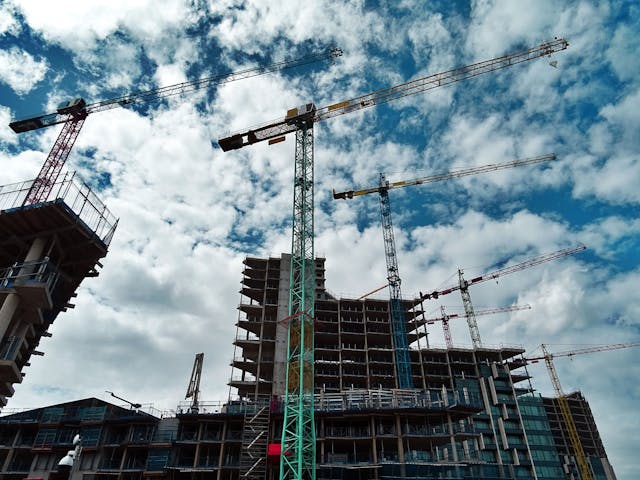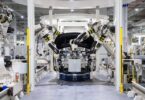The construction industry is on the cusp of transformation, driven by innovative technologies and evolving practices. As new methods and tools reshape how projects are planned and executed, staying ahead of these trends is crucial for industry professionals. This article explores the six key trends set to revolutionize construction in the coming years.
From advancements in Building Information Modeling (BIM) to the integration of smart technologies, these trends promise to enhance efficiency, sustainability, and safety. As always, keeping up with these changes boosts productivity and contributes to a safer work environment, something that a New York construction accident attorney can help address in case of incidents.
Let’s examine some of the ways the construction industry may change in the coming years, making the world safer for everyone!
- Building Information Modeling (BIM)
Building Information Modeling (BIM) is transforming the construction industry by offering a comprehensive digital representation of physical and functional characteristics of a project. BIM allows architects, engineers, and construction professionals to collaborate on a single platform, which improves accuracy and efficiency throughout the project lifecycle.
This technology facilitates better planning, design, and management by integrating data into a 3D model that can be shared and updated in real time. BIM streamlines the construction process and helps identify potential issues before they arise, reducing costly errors and delays.
As BIM becomes more advanced, its role in optimizing construction workflows and improving project outcomes will continue to grow.
- Sustainable Construction Practices
Sustainable construction practices are increasingly becoming a focal point in the industry, a change driven by the need to minimize environmental impact and enhance resource efficiency. This trend encompasses a range of strategies, including the use of eco-friendly materials, energy-efficient building designs, and waste-reduction techniques.
Sustainable construction aims to create structures that are environmentally responsible, economically viable, and socially beneficial. Innovations such as green roofs, solar panels, and advanced insulation technologies are being adopted to reduce a building’s carbon footprint and operational costs.
By prioritizing sustainability, the construction industry is contributing to global efforts to combat climate change and promote long-term environmental stewardship. These practices are essential for meeting modern regulatory standards and responding to increasing public demand for greener, more sustainable buildings.
- Advanced Construction Technologies
Advanced construction technologies are revolutionizing how buildings are designed, constructed, and maintained. Innovations such as 3D printing, robotics, and drone surveying are enhancing precision and efficiency on construction sites.
3D printing allows for the rapid production of building components to reduce material waste and construction time. Robotics can automate repetitive tasks, improving safety and consistency. Drones offer aerial views and real-time data that facilitate better project monitoring and site inspections.
Also, augmented reality (AR) and virtual reality (VR) technologies are being used for immersive design reviews and training simulations. These advancements help in overcoming challenges related to labor shortages and project complexity.
As technology continues to evolve, its integration into construction practices will likely lead to more innovative solutions and improved project outcomes.
- Prefabrication and Modular Construction
Prefabrication and modular construction are gaining traction as efficient methods for building projects. Prefabrication involves constructing components or sections of a building in a factory setting before transporting them to the site for assembly.
This approach allows for greater control over quality and faster construction timelines, as work can proceed simultaneously at multiple locations. Modular construction takes this a step further by assembling entire building modules off-site and then placing them on the foundation.
Both methods reduce on-site construction time, minimize disruptions, and can lead to cost savings. They also contribute to sustainability by decreasing waste and improving resource efficiency. Looking to the future, prefabrication and modular construction are poised to play a significant role in shaping the industry.
- Smart Buildings and IoT Integration
Smart buildings and Internet of Things (IoT) integration are transforming how structures operate and interact with their occupants. Smart buildings leverage IoT technology to optimize various systems, such as lighting, heating, cooling, and security, through interconnected sensors and devices. These technologies collect and analyze data to enhance efficiency, reduce energy consumption, and improve overall comfort.
For instance, smart thermostats can adjust temperatures based on occupancy patterns, while automated lighting systems can respond to natural light levels. IoT integration also enables remote monitoring and management, which allows facility managers to address issues proactively and streamline maintenance.
The advancement of smart technologies will inevitably lead to their adoption in construction and drive the creation of more responsive and adaptive environments.
Building Tomorrow Today
The future of construction is shaped by these emerging trends, promising enhanced efficiency, sustainability, and innovation. Embracing advancements like BIM, sustainable practices, and smart technologies will pave the way for a more resilient and intelligent built environment.
Staying informed and adaptable is key to overcoming these changes to make sure that industry professionals remain at the forefront of progress and excellence. The future looks bright!













